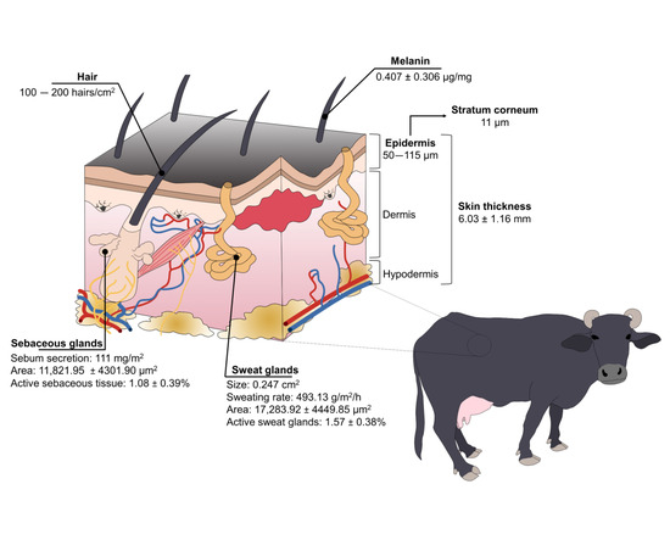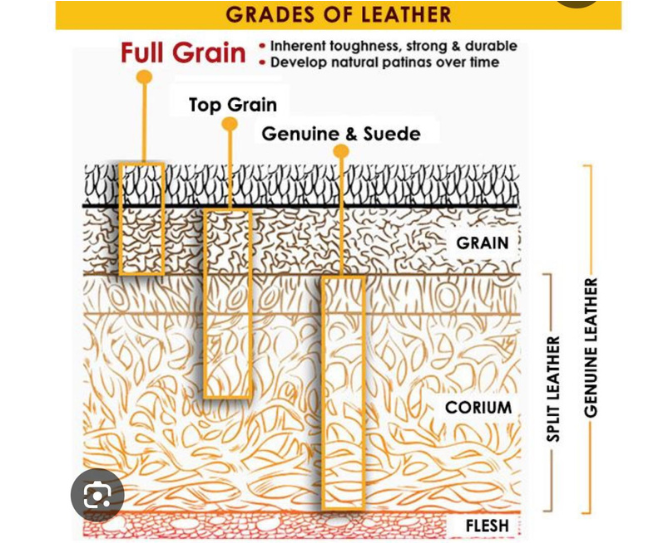leather knowledge
LUXURIOUS
THE HANDLE OF LEATHER ADDS LUXURY
Leather has long been a component of luxury goods, from covetable handbags to footwear and clothing. It has a distinctive touch and wear quality that cannot be replicated and for that reason it is often combined with hard-edged technology to provide a more luxurious and personal feel to an item that is otherwise anonymous. As with all natural materials it creates a user experience that is more emotional, less functional.
COMFORTABLE
LEATHER HAS A NATURAL COMFORT
Leather has a ‘breathability’ that more easily allows body temperature to be regulated. It naturally absorbs and holds moisture away from the skin until it can evaporate to the outside.
Leather can also mould to the wearer. Whether it’s a glove, a shoe, a leather jacket, or a wallet that’s been carried in a back pocket for years, leather conforms to its wearer for a very individual comfort and fit.
LONG LASTING
GOOD LEATHER AGES WELL AND LASTS
Well-made leather lasts a long time. Unlike most man-made or synthetic materials, leather gets better with age, acquiring a depth of patina and wear pattern that is individual to the user -much like a favourite pair of jeans.
As we mindfully look for ways to lower consumption, leather very much fits with the ethos of ‘buy less, buy better’. Investing in quality leather products is investing for the future.
REDUCES WASTE
LEATHER IS A NATURAL BY-PRODUCT
Modern leather manufacturing recycles over 270 million cow hides each year. These are a by-product of the food industry and without the leather industry transforming them into leather, over 7 million tonnes would go to landfill with huge environmental and biological impact. Leather makes a sustainable contribution to a society that needs to consume less, reuse more and a recycle everything.
understanding leather weight and thickness
What Is Leather Weight?
Leather weight isn’t defined by how much a leather hide actually weighs. Leather doesn’t convey weight in the formal sense but the thickness. Typically, in the U.S., leather thickness is measured in ounces.
In general, one ounce (1 oz) would correspond to 1/64 of an inch in leather thickness or 0.4 millimeters (mm), depending on which measurements you are using. Two ounces (2 oz) would correspond to 1/32 of an inch in leather thickness or 0.8 mm.
When describing leather, leather weight and thickness go hand in hand. Knowing how they’re measured can be helpful, especially when buying leather.
Leather Weight Guide
If you are buying leather for a project, it will be necessary to determine how much leather would be needed. Leather is a natural product, and in most cases, it is sold and measured by square foot. In addition, terms like leather thickness and weight may sound confusing.
The term “weight” means thickness when describing leather. Leather thickness and weight go hand in hand.
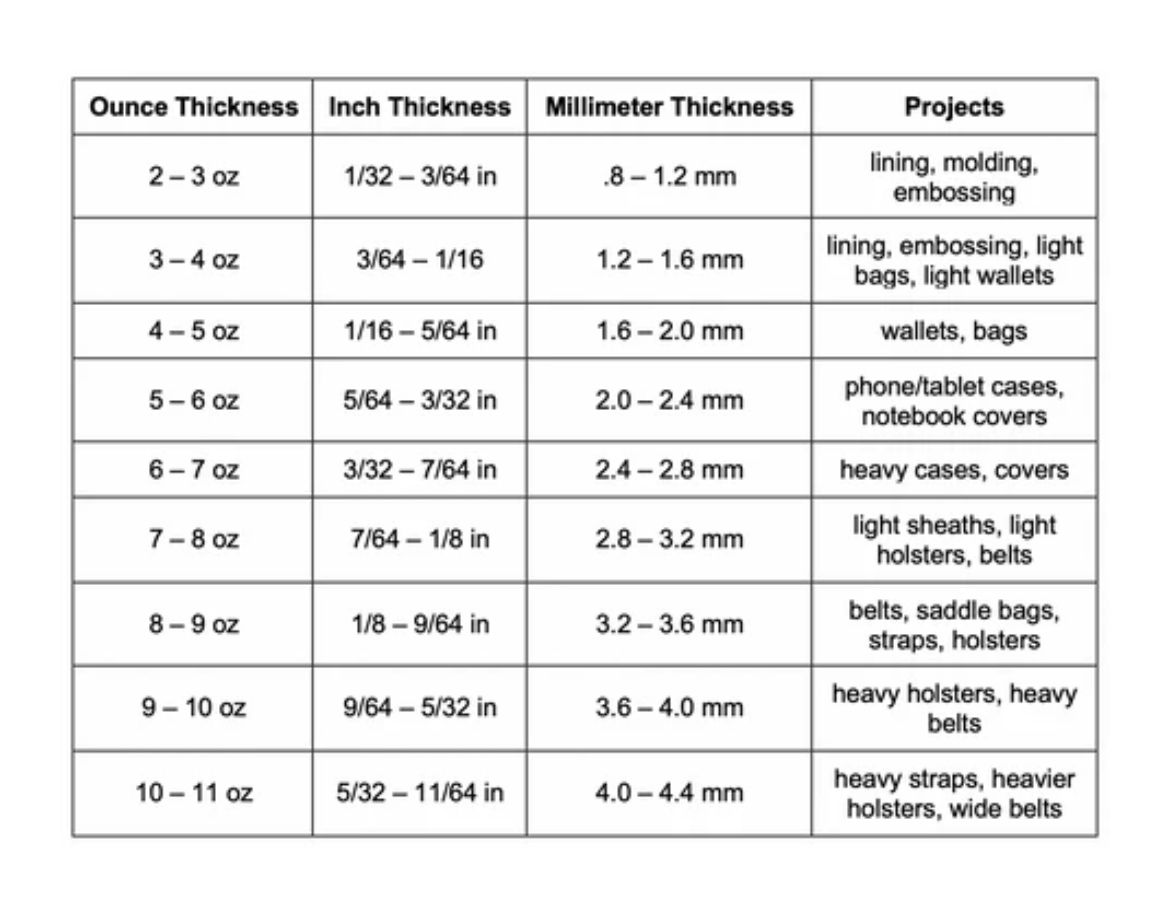
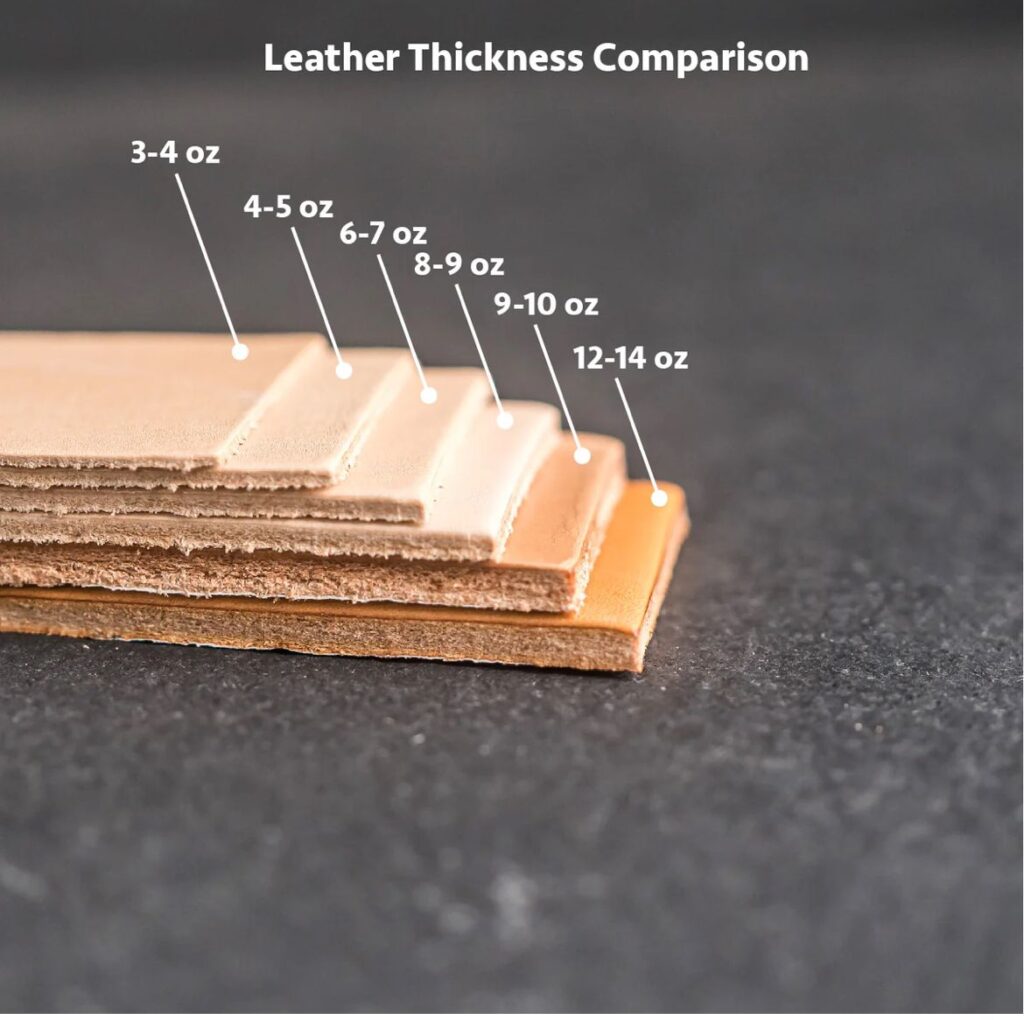
understanding leather shape
Whole Leather Cut
A whole leather hide encompasses the entire skinned and tanned hide from an animal. Since it includes the areas from all of the other related cuts, the leather available will range from softer areas with various stretch characteristics, to thicker, stiffer areas of the hide. The range of leather thickness and weight will vary across the entire hide.
Butt Leather Cut
The butt cut of a leather hide is from the hind leg portion of the hide, running around the butt and up towards the spine. This is the thickest and firmest area of the hide. Butt cuts make a good leather for thicker items such as heavy belts.
Side Leather Cut
The side cut of a leather hide is a half of an entire hide, cut lengthwise along the middle. since this includes at least parts of areas from all related cuts, the leather available will range from softer areas with various stretch characteristics, to thicker, stiffer areas of the hide.
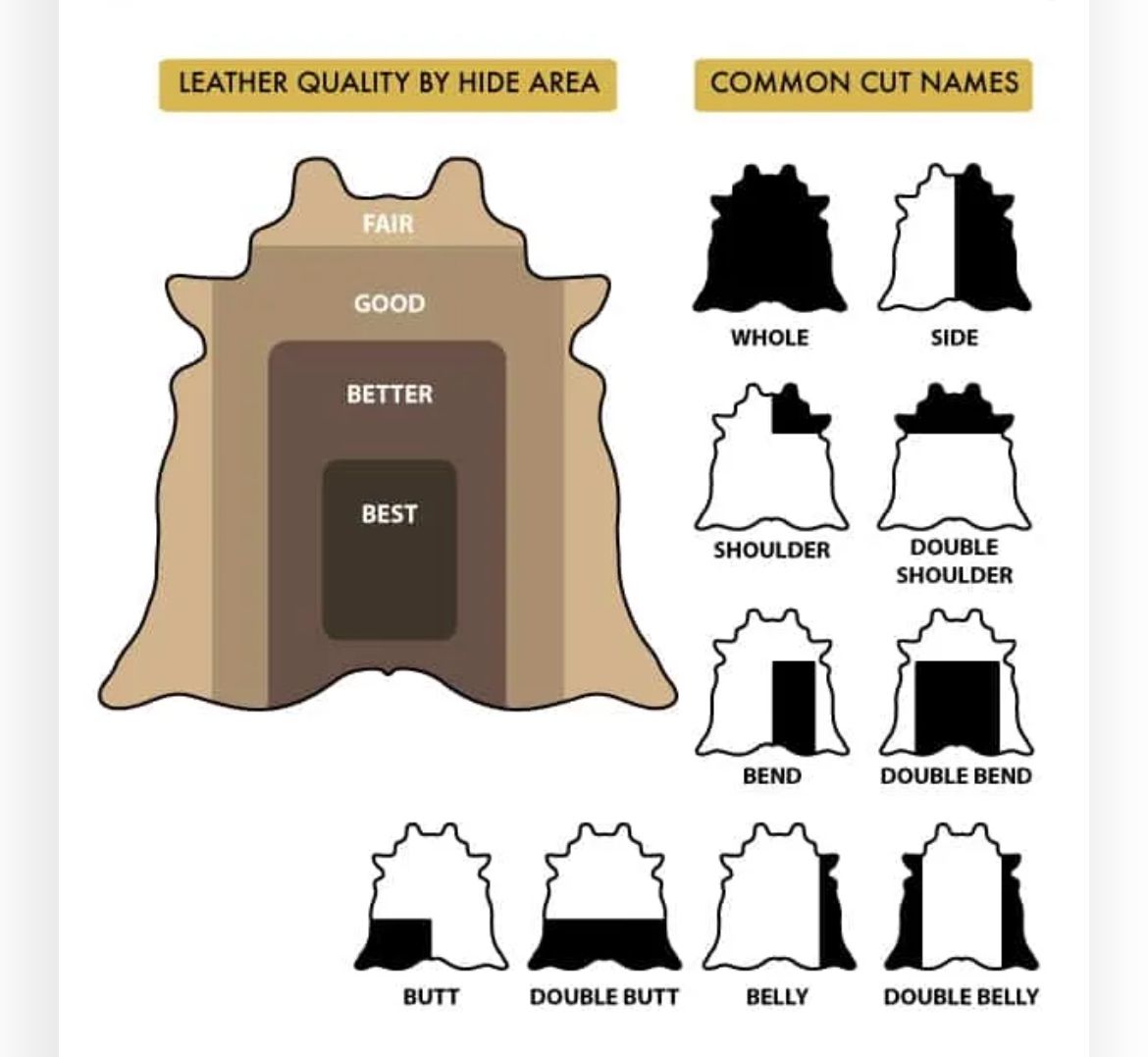

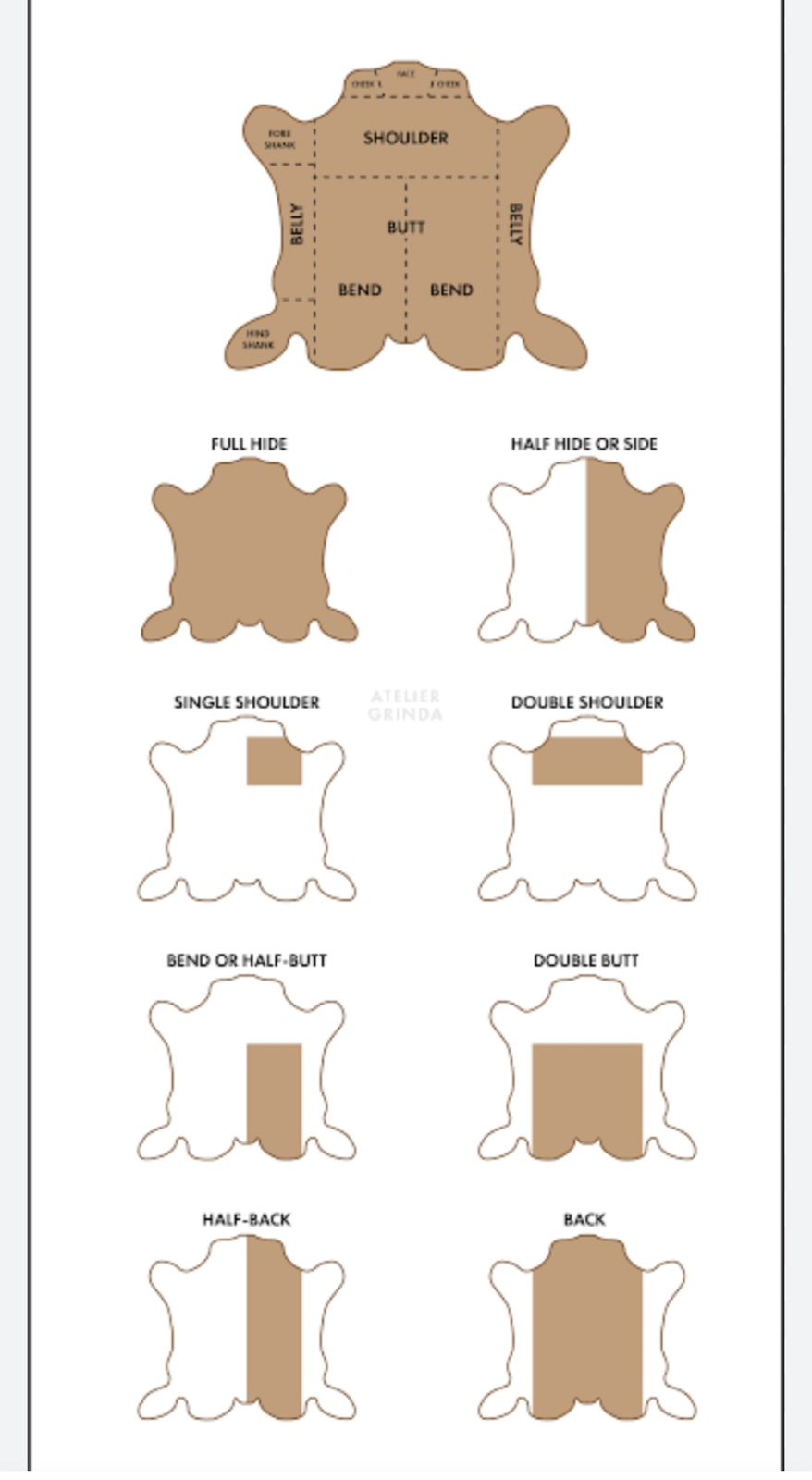
understanding water buffalo leather
The water buffalo (Bubalus bubalis), also called domestic water buffalo, Asian water buffalo and Asiatic water buffalo, is a large bovid originating in the Indian subcontinent and Southeast Asia. Today, it is also kept in Italy, the Balkans, Australia, North America, South America and some African countries. [1] Two extant types of water buffalo are recognized, based on morphological and behavioural criteria: the river buffalo of the Indian subcontinent and further west to the Balkans, Egypt and Italy; and the swamp buffalo from Assam in the west through Southeast Asia to the Yangtze Valley of China in the east . [1][2]
Around 26 million water buffaloes are slaughtered each year for meat worldwide, [36] They contribute 72 million tonnes of milk and three million tonnes of meat annually to world food, much of it in areas that are prone to nutritional imbalances. In India, river buffaloes are kept mainly for milk production and for transport, whereas swamp buffaloes are kept mainly for work and a small amount of milk. 187)
Water buffalo meat or carabeef (38) is a major source of export revenue for India, 139) The hides provide tough and useful leather. [40]
The world buffalo population is estimated at 185.29 million, spread in some 42 countries, of which 179.75 million (97%) are in Asia (Figure 1, FAO, 2008). India has 105.1 millions and they comprise approximately 56.7 percent of the total world buffalo population. During the last 10 years, the world buffalo population increased by approximately 1.49% annually, by 1.53% in India, 1.45% in Asia and 2.67% in the rest of the world.

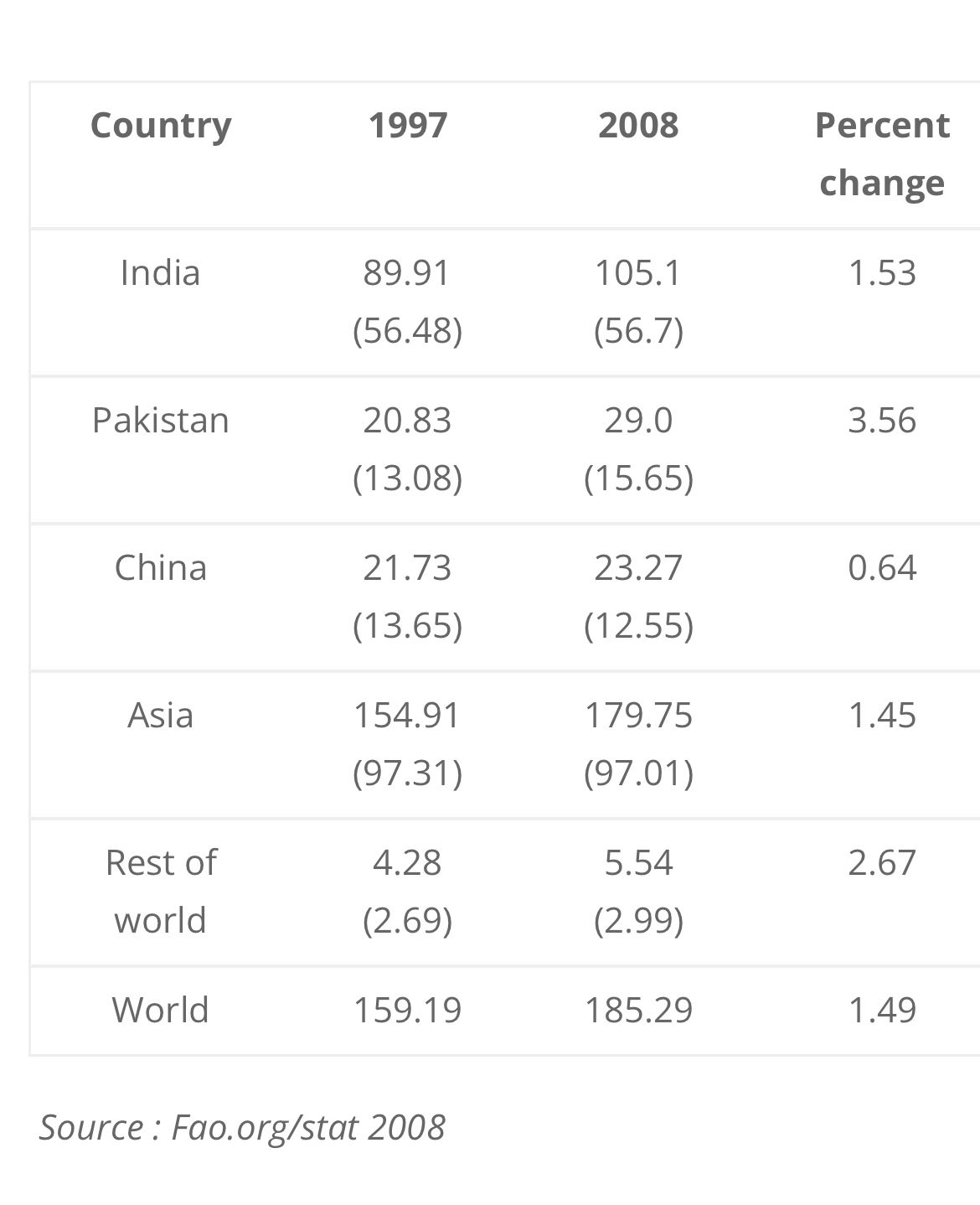
Appearance
Looking from a far, it is hard to spot a difference in their appearances. Zooming in, buffalo leather has pronounced and coarse grain which makes its appearance kind of thick. Also, its dark brown shades make it further distinctive.
On the other hand, the cowhide leather is less grainy comparatively with smaller pores. It has a hairy texture and a lighter tone. Cows are smaller in size but the stretchability of cowhide leather allows them to appear bigger than buffalo leather.
Durability
Leather is naturally durable item and can last for decades. So, the strength of the two types is almost similar but elasticity and durability differ. Buffalo leather is not stretched during its processing. It is rigid and tough and therefore can survive for more than a century.
Cowhide leather can stretch excessively but that doesn’t necessarily make it less strong, so it can survive many years as well. However, full-grain grants the advantage to buffalo leather to survive longer than cowhide leather.
Buffalo leather is appraised to be one of the most popular leathers and rightly so. Its thicker dermis maintains its stiffness and keep its shape intact for years. It protects the product from damage more effectively than cowhide leather. The presence of grain makes it much more durable.
As compared to other types, it is eco-friendly too as its tanning requires fewer chemicals resulting in fewer emissions. Similarly, you won’t feel any unpleasant odour of typical leather goods that makes it ideal for outwear. Finally, its different rich shades of brown are enough for a royal look and feel.
Buffalo leather is known for its exceptional durability and strength, making it a popular choice for a wide range of leather goods. The thickness of buffalo hides, coupled with their natural resistance to stretching during tanning. contributes to their robust nature. This durability makes buffalo leather suitable for items that experience heavy use and require long-term resilience.
Key aspects of buffalo leather durability:
Thick and Dense Fibers:
Buffalo leather has a thicker epidermal layer compared to cowhide, resulting in a more robust and tear-resistant material.
Resistance to Stretching:
Unlike cowhide, buffalo hides are not stretched during the tanning process, which helps to maintain their thickness and strength.
Durable and Long-lasting:
Buffalo leather products are known for their ability to withstand wear and tear, making them a good investment for items like bags, belts, and jackets.
Patina Development:
With proper care, buffalo leather develops a rich patina over time, enhancing its beauty and character while maintaining its durability.
Suitable for High-Wear Items:
Due to its strength and resilience, buffalo leather is often used for items that experience a lot of use, like bags, wallets, and belts.
Resistance to Abrasion and Punctures:
Buffalo leather’s durability makes it highly resistant to abrasion and punctures, further contributing to its longevity.
Buffalo leather vs. other leathers:
- Buffalo leather is generally considered more durable than cowhide.
- Its unique texture and grain pattern also contribute to its aesthetic appeal.
- While other leathers may be treated to increase durability, buffalo leather’s natural robustness makes it a strong contender for long-lasting products.
